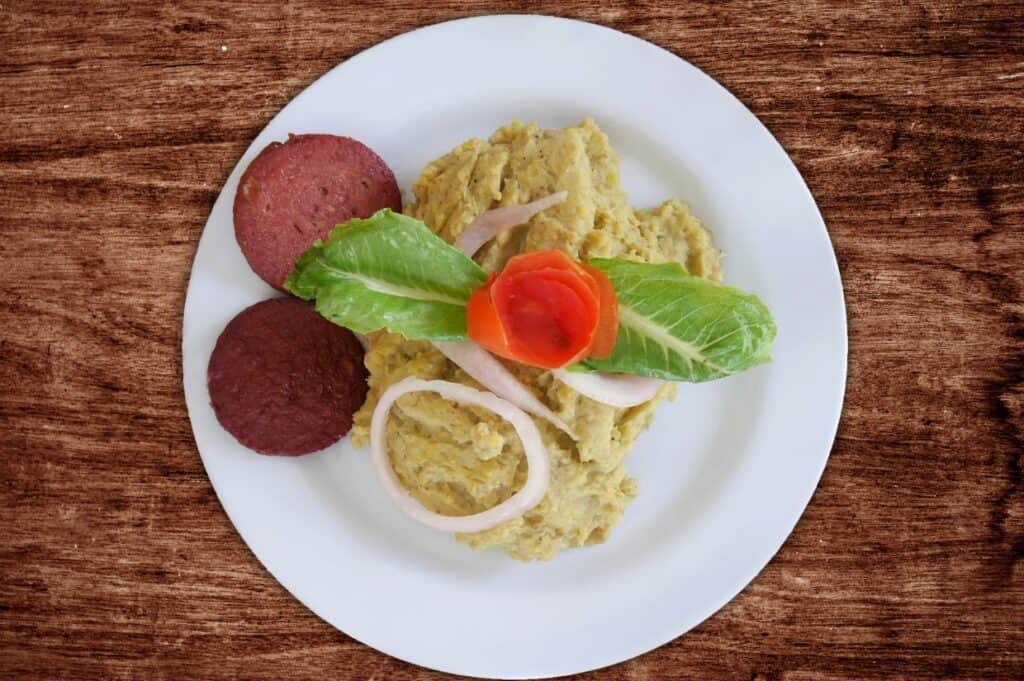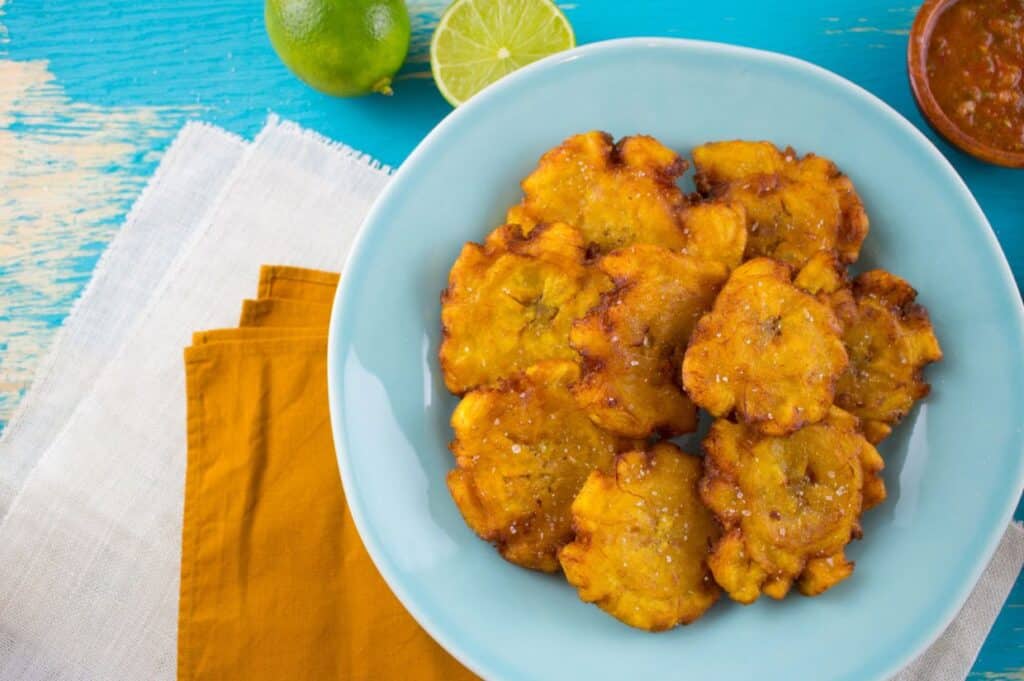Ever had a meal so good it instantly transported you to a different place? That’s what Dominican cuisine does — it’s packed with bold and comforting flavors rich in history. Whether you’re savoring a rich stew or enjoying crispy bites of plantain, every dish has a story to tell. Let’s take a culinary tour of the Dominican Republic and explore the dishes that make this island’s food scene unforgettable.

Sancocho: The heart and soul of Dominican cooking
No discussion about Dominican food would be complete without mentioning sancocho, the country’s most popular dish. This hearty stew is often reserved for special occasions, but locals will happily make it whenever they want something delicious. Made with a variety of meats like beef, pork, chicken and sometimes goat, sancocho is rich and comforting. What sets it apart from other stews is the addition of root vegetables like yucca, plantains and sweet potatoes.
Now, if you’re thinking, “It’s just a stew, right?” Well, yes and no. This isn’t your average bowl of broth and meat. Sancocho is a dish that brings people together, whether it’s for a Sunday family gathering or a big celebration. It’s served with white rice and slices of fresh avocado — because what’s a tropical dish without an avocado?
Mangu: A breakfast staple with a history
If you’re more of a breakfast person, then you’ve got to try mangu. This dish has African roots and is basically mashed plantains served with all the toppings you could dream of. Think savory onions sautéed in vinegar, fried eggs, salami and maybe a slice or two of fried cheese if you’re feeling indulgent. It’s hearty, flavorful and the kind of breakfast that fuels you up for a day of exploring.

What’s cool about mangu is its versatility. It’s the kind of meal that can be whipped up quickly on a busy morning or dressed up for a weekend brunch with family. Plus, if you’ve never had plantains before, this is the perfect way to start!
La bandera: The Dominican Republic on a plate
Now let’s talk about la bandera. The name means “The Flag” in Spanish, and the dish is a nod to the colors of the Dominican flag — red, white and blue. But instead of using those colors, the dish is symbolic. It consists of rice (white), red beans (red) and meat, usually chicken or beef, and the blue comes from the idea of strength. La bandera is the everyday meal for many Dominicans, and for a good reason. It’s simple, filling and showcases some of the key flavors of the island.
The beans are usually stewed with garlic, onions and peppers, making them rich and savory. The meat is often cooked in a flavorful tomato-based sauce, and the rice is fluffy and perfectly cooked. Throw some fried plantains on the side and you have a comforting and satisfying meal.
Tostones: Crispy plantain perfection
Speaking of plantains, let’s not forget about tostones. These crispy, fried plantain slices are the ultimate snack or side dish. Unlike their softer cousin mangu, tostones are made from green plantains that are sliced, fried, smashed and then fried again for that perfect, crispy texture. They’re salty, crunchy and best enjoyed with a little sprinkle of garlic sauce or a squeeze of lime.

What makes tostones so addictive? It’s that perfect balance of salty and starchy with just a hint of sweetness from the plantain. They’re simple but incredibly satisfying, and once you start snacking on them, it’s hard to stop.
Pescado frito: Fresh, fried and flavorful
Since the Dominican Republic is surrounded by water, it’s no surprise that seafood is a major player in the local cuisine. Pescado frito, or fried fish, is a popular beachside meal, and it’s exactly what you want after a morning of sun and sand. Imagine biting into a whole fried fish, crispy on the outside, tender on the inside, and served with lime wedges and maybe a side of tostones or rice and beans.
The fish is usually seasoned with garlic, lime juice and a mix of local spices before it’s fried to golden perfection. And if you’re near the coast, chances are that fish was swimming in the ocean just a few hours before it landed on your plate. You can’t get fresher than that!
Pastelón: A Caribbean twist on lasagna
Craving something a little more familiar but with a tropical twist? Meet pastelón, the Dominican version of lasagna. Instead of pasta, this dish uses layers of ripe, sweet plantains and ground beef. The sweetness of the plantains pairs beautifully with the savory meat filling, and it’s all baked together with cheese until it’s bubbly and golden.
It’s the kind of dish that combines sweet and savory in an incredibly satisfying way, and it’s a popular choice for family dinners or special occasions. If you love a little sweet in your savory, this one’s for you.
Dulce de leche and beyond: A sweet ending
Of course, no meal is complete without a dessert, and the Dominican Republic has some great sweets. Dulce de leche, a caramel-like treat made from sweetened milk, is a crowd favorite. You’ll find it drizzled over cakes, pastries or even eaten by the spoonful.
Another must-try is habichuelas con dulce, a sweet dessert made from red beans. The beans are cooked with coconut milk, cinnamon and sugar, creating a thick, creamy treat that’s perfect for dipping bread into. It’s a dessert that’s traditionally eaten during Holy Week, but really, who’s going to stop you from enjoying it year round?
Final thoughts
The Dominican Republic isn’t just a paradise for beach lovers; it’s also a dream come true for foodies. From the hearty warmth of sancocho to the crispy perfection of tostones, every dish tells a story of the island’s rich cultural history and love for bold flavors. Whether you’re planning a trip or just dreaming of tropical escapes, Dominican cuisine is worth exploring. So, next time you’re craving something a little different, why not bring a taste of the tropics to your table?